The Space Race- U.S. vs. USSR in the 20th Century

The Space Race: U.S. vs. USSR in the 20th Century
The mid-20th century was an age defined by competition between two superpowers, the United States and the Soviet Union. Their rivalry stretched across nearly every aspect of global politics, from military alliances to cultural influence. Yet one of the most visible and dramatic arenas of this struggle took place far above the Earth. The Space Race, as it came to be known, captured the imagination of millions, reshaped technology, and altered the course of history. It was a contest of rockets and satellites, astronauts and cosmonauts, each step reflecting not only scientific achievement but also ideological conflict.
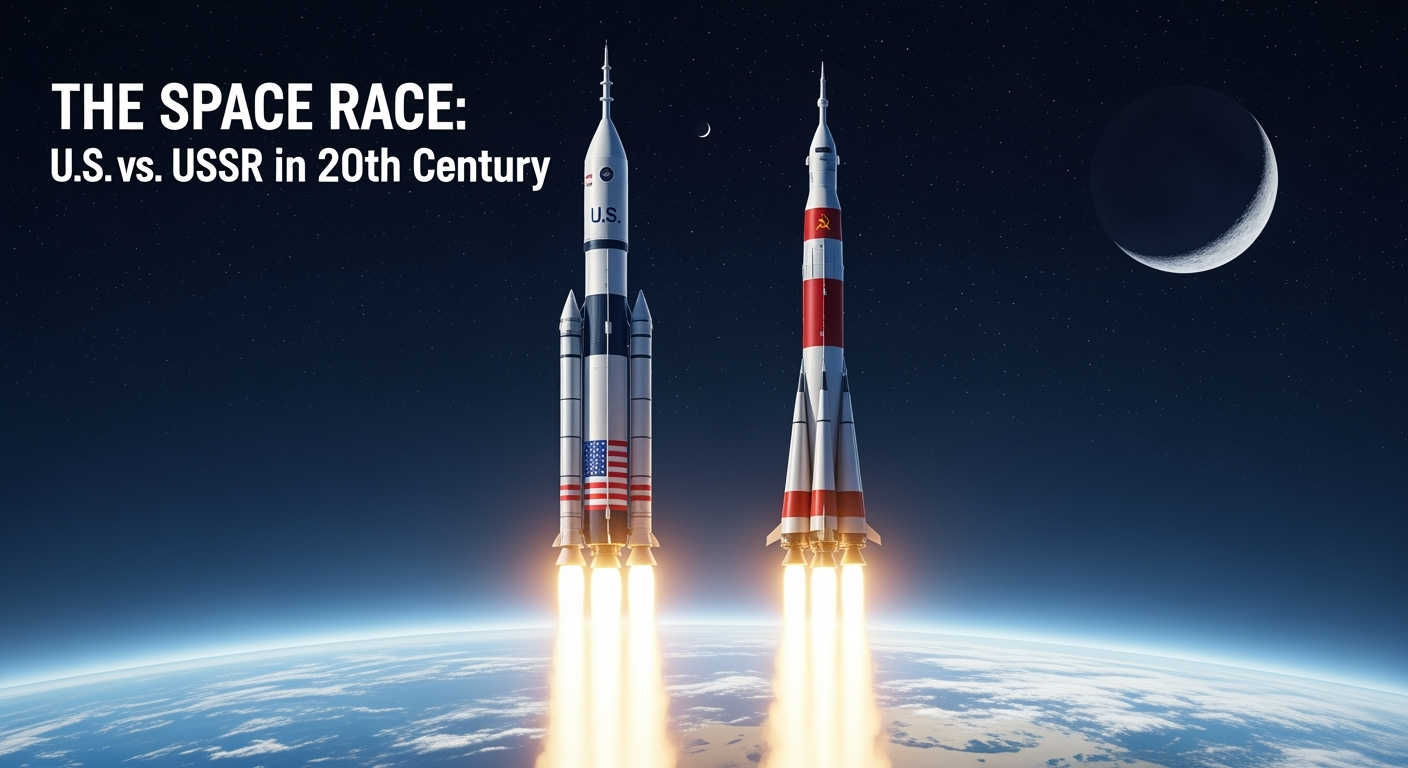
The Dawn of the Space Age
The origins of the Space Race can be traced to the aftermath of World War II. Both the United States and the Soviet Union sought to acquire German rocket technology, particularly the V-2 missile developed by Wernher von Braun and his team. These weapons had terrorized Europe, but they also represented the foundation of space exploration.
By the late 1940s and early 1950s, both nations were investing heavily in rocketry. The Soviet Union, under Sergei Korolev, developed powerful launch systems, while the United States advanced its own programs through the military and newly formed civilian agencies. The race truly began in 1957 when the Soviet Union stunned the world with the launch of Sputnik 1, the first artificial satellite to orbit Earth.
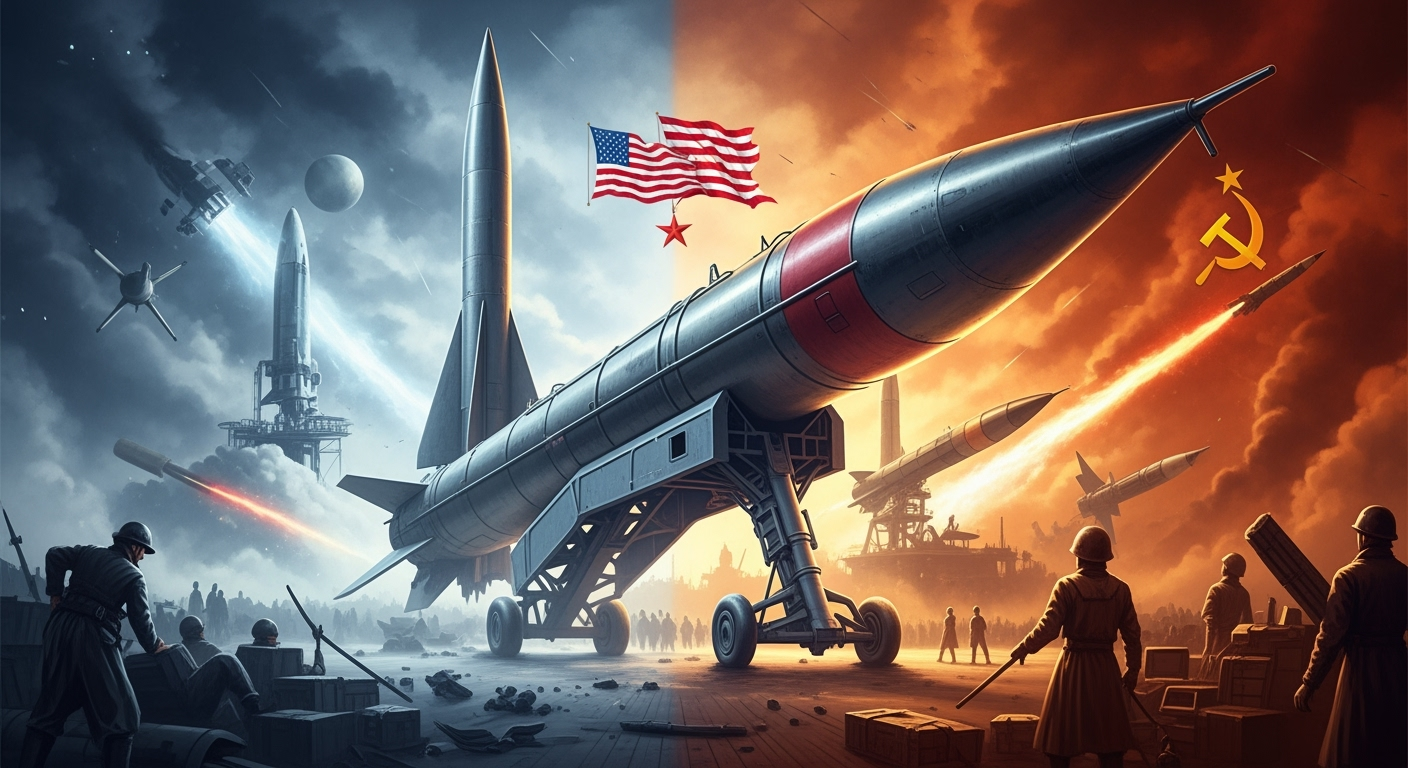
Sputnik and the Shock of 1957
The launch of Sputnik on October 4, 1957, marked a turning point. The small, beeping satellite seemed harmless, but its significance was enormous. For Americans, it signaled that the Soviet Union had taken the lead in space technology and could potentially launch intercontinental missiles.
The reaction in the United States was swift. Schools emphasized science and math education, federal funding for research increased, and in 1958 the government created the National Aeronautics and Space Administration (NASA). What had begun as a Soviet triumph became a global competition for prestige, security, and leadership.
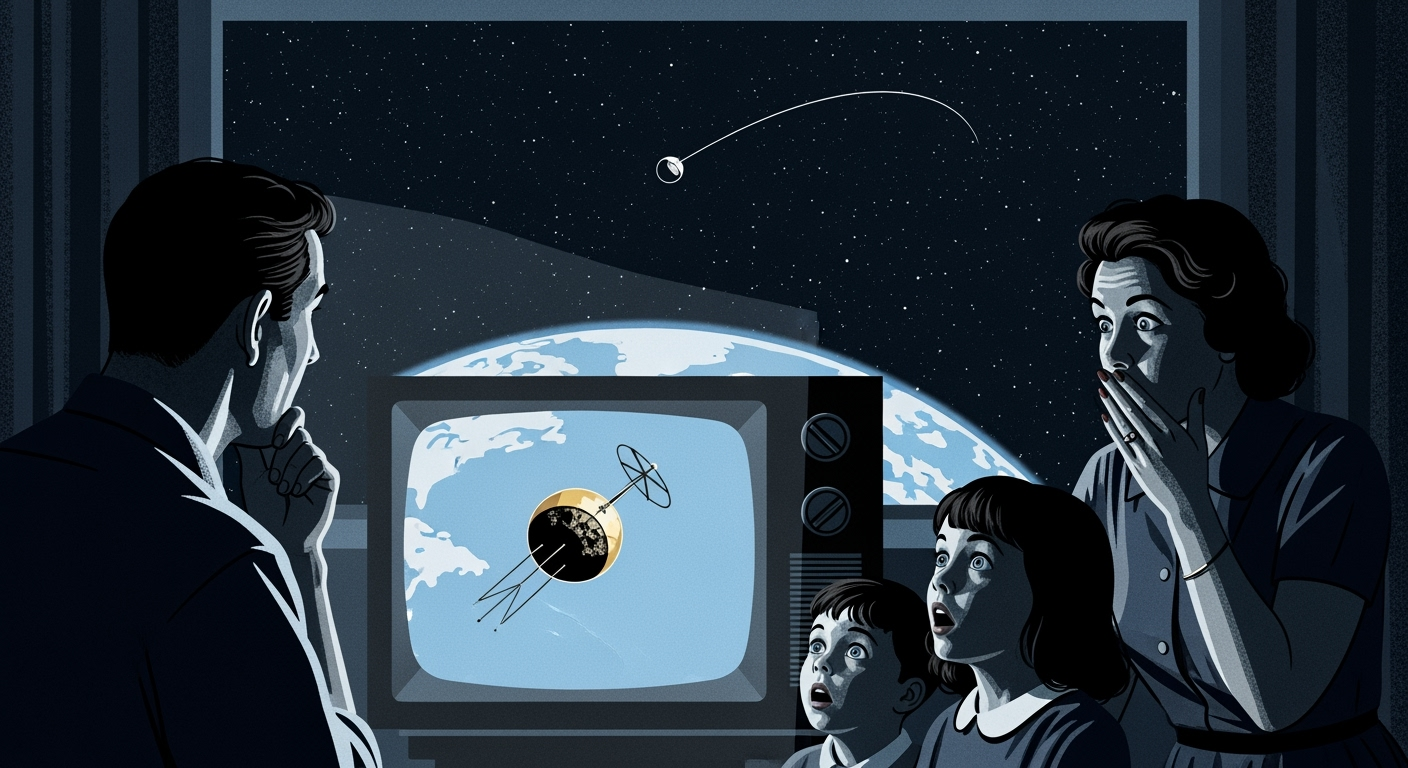
Firsts in Space: The Soviet Lead
In the early years, the Soviet Union dominated the race with a series of pioneering achievements. In 1959, the probe Luna 2 became the first human-made object to reach the moon. Two years later, on April 12, 1961, cosmonaut Yuri Gagarin became the first human to orbit Earth aboard Vostok 1. His flight lasted just 108 minutes, but it electrified the world and confirmed Soviet supremacy in space exploration.
The Soviets followed with more milestones. Valentina Tereshkova became the first woman in space in 1963, and Alexei Leonov completed the first spacewalk in 1965. Each success was broadcast worldwide as proof of the Soviet Union’s scientific power and ideological superiority.
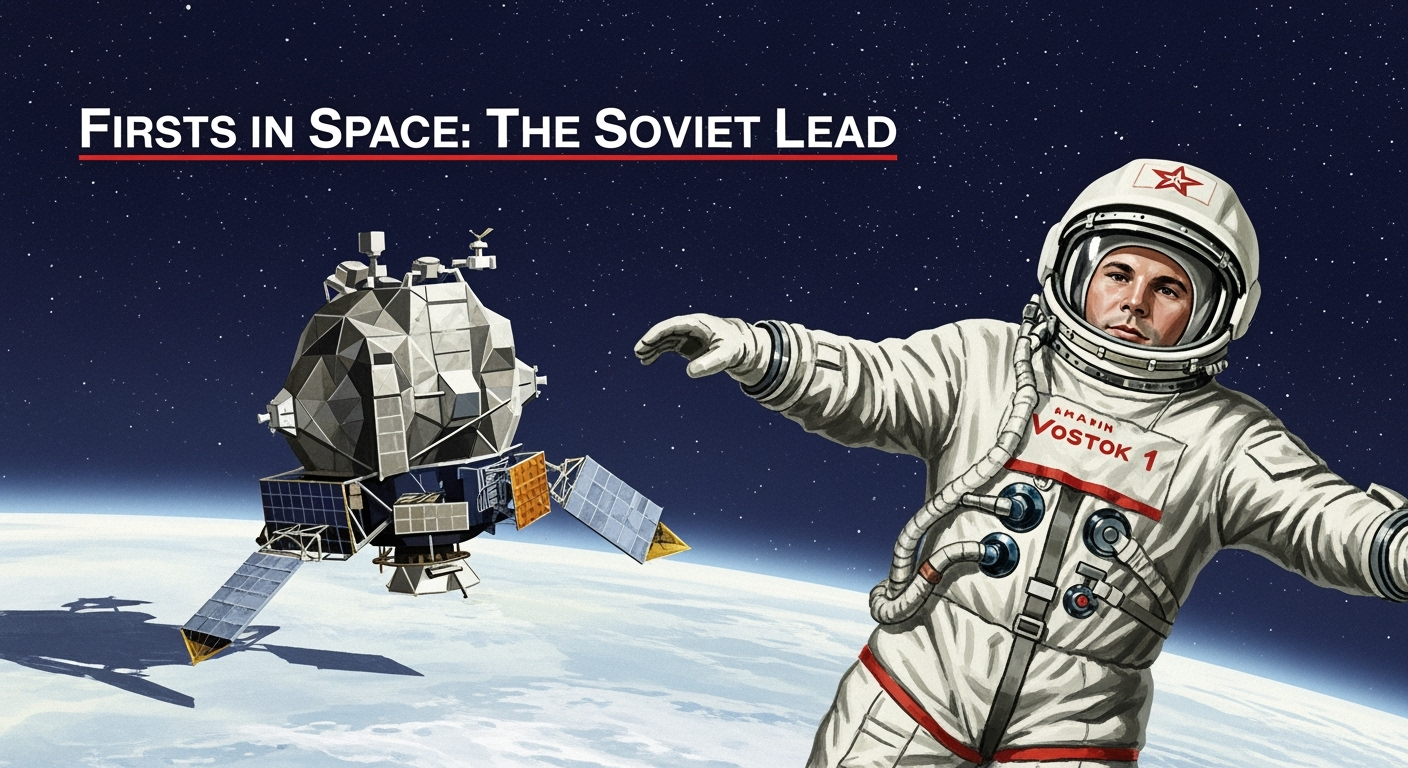
America Responds
The United States struggled to catch up but made steady progress. Project Mercury, America’s first manned space program, achieved its goal when Alan Shepard became the first American in space in May 1961. Later that year, President John F. Kennedy delivered a famous address to Congress, declaring the ambitious goal of landing a man on the moon and returning him safely to Earth before the end of the decade.
This bold commitment galvanized the nation. NASA launched Project Gemini, which tested techniques for spacewalking, rendezvous, and docking, all necessary for future lunar missions. By the mid-1960s, the U.S. was narrowing the gap, but the Soviets remained ahead in terms of symbolic “firsts.”
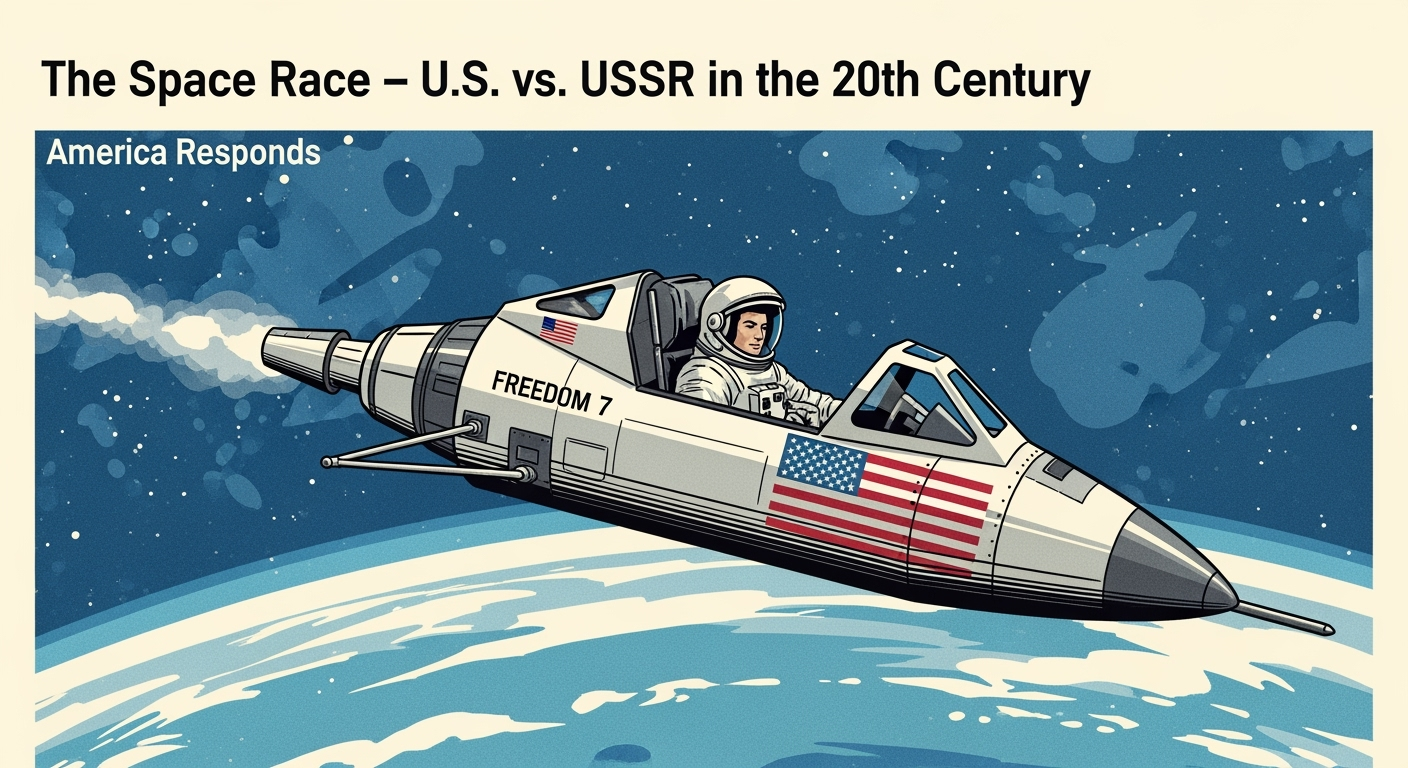
Apollo and the Race to the Moon
The Apollo program became the centerpiece of America’s strategy. It faced setbacks, including the tragic Apollo 1 fire in 1967 that killed three astronauts. Yet perseverance paid off. In December 1968, Apollo 8 carried astronauts into orbit around the moon, the first humans to leave Earth’s orbit.
On July 20, 1969, the race reached its climax. Apollo 11 astronauts Neil Armstrong and Buzz Aldrin set foot on the lunar surface while Michael Collins orbited above. Armstrong’s words, “That’s one small step for man, one giant leap for mankind,” were broadcast to millions worldwide. The moon landing was more than a scientific triumph. It was a symbolic victory for the United States in the Cold War.
The Apollo program continued with five more successful lunar landings, each bringing back scientific data and samples. For a time, the moon became a laboratory of human exploration, demonstrating the power of American technology and commitment.
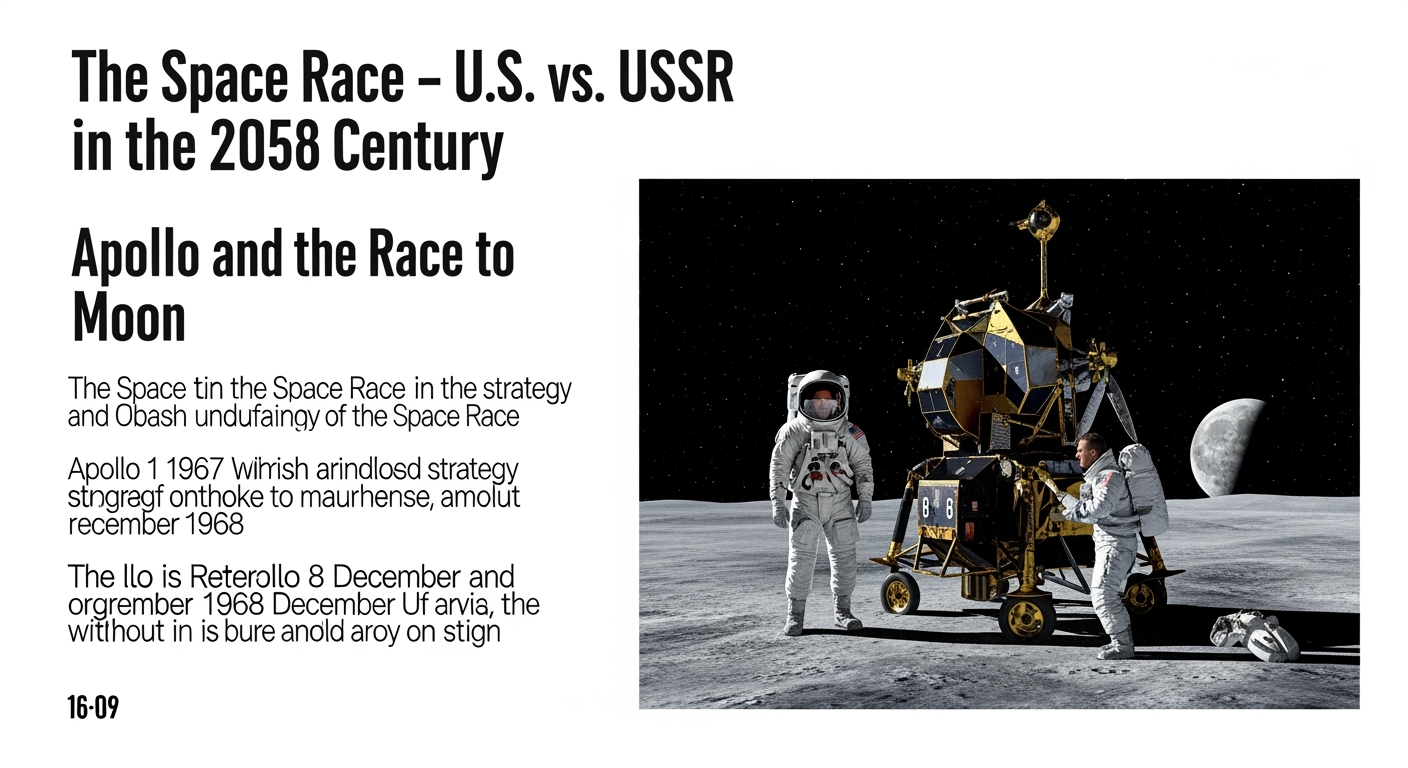
Soviet Efforts and Setbacks
The Soviet Union also attempted to reach the moon but faced difficulties. Technical failures, internal rivalries, and the death of chief designer Sergei Korolev in 1966 weakened the program. The Soviets shifted focus to other achievements, such as long-duration space missions and orbital stations.
In 1971, they launched Salyut 1, the first space station, beginning a legacy that would eventually lead to the Mir station and, later, Russian contributions to the International Space Station. While the United States had won the race to the moon, the Soviet Union maintained a strong presence in human spaceflight.
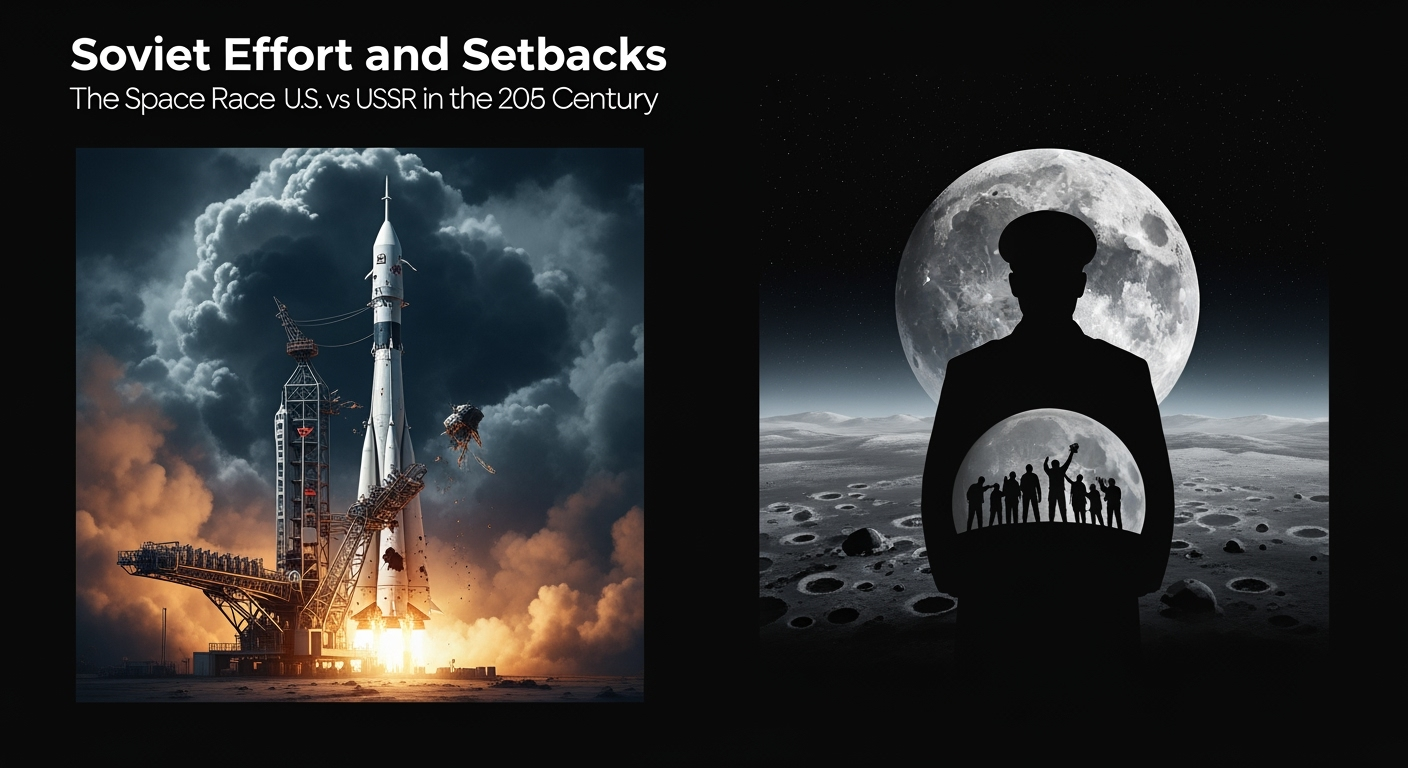
The Cultural Impact
The Space Race was more than a geopolitical contest. It captured imaginations and shaped culture. Children dreamed of becoming astronauts, science fiction flourished, and space-age design influenced art, architecture, and fashion.
Television broadcasts of launches and moonwalks brought space exploration into living rooms around the world. The achievements of both Soviet cosmonauts and American astronauts symbolized human courage and curiosity. At the same time, the vast expense of the programs sparked debates about priorities, as critics questioned whether billions should be spent on space while poverty and inequality remained on Earth.
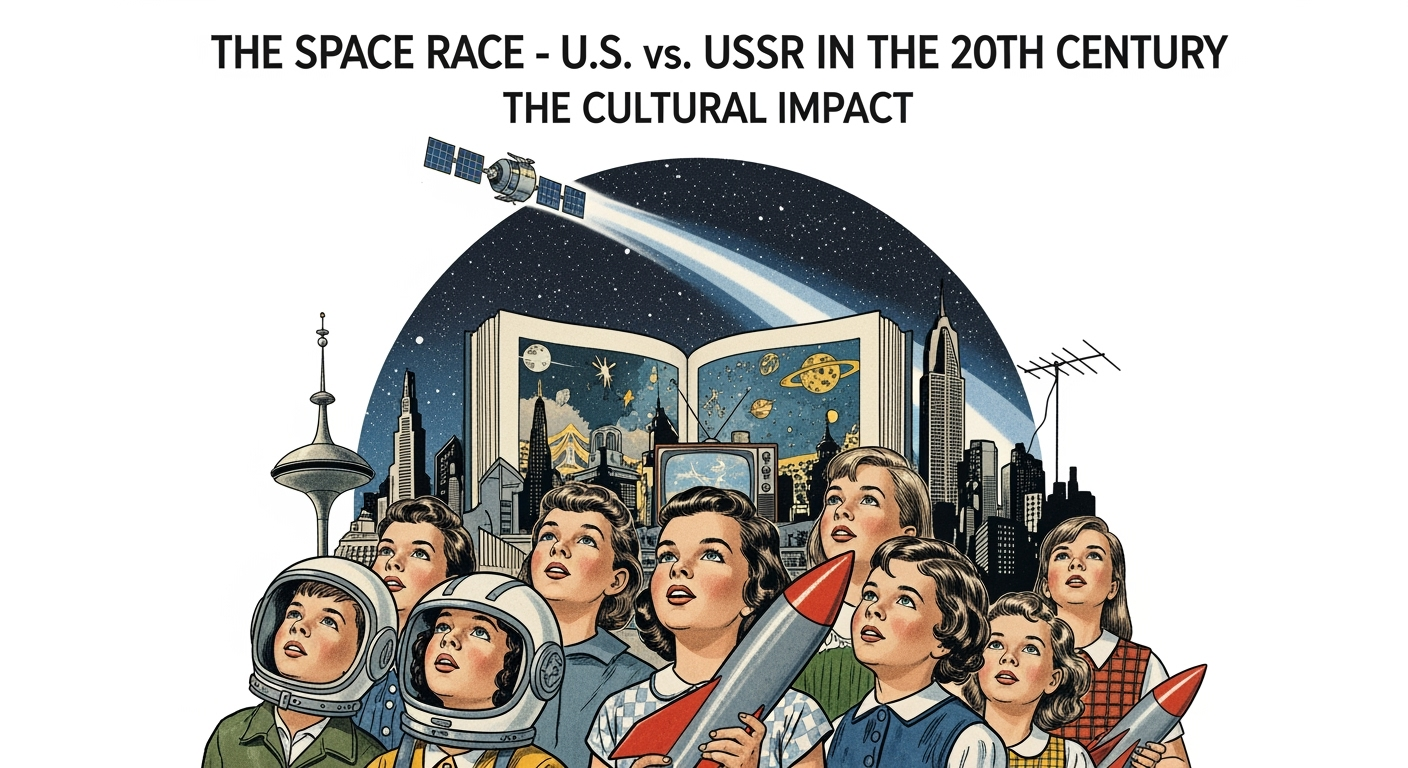
Cooperation Amid Rivalry
Despite the intense competition, moments of cooperation emerged. In 1975, the Apollo-Soyuz Test Project brought U.S. and Soviet spacecraft together in orbit. Astronauts and cosmonauts shook hands in space, a symbolic gesture of détente during a tense era.
This spirit of collaboration grew in later decades. The International Space Station, first launched in the 1990s, became a joint effort involving the United States, Russia, and other nations. What had once been a battlefield of rivalry became a platform for cooperation.
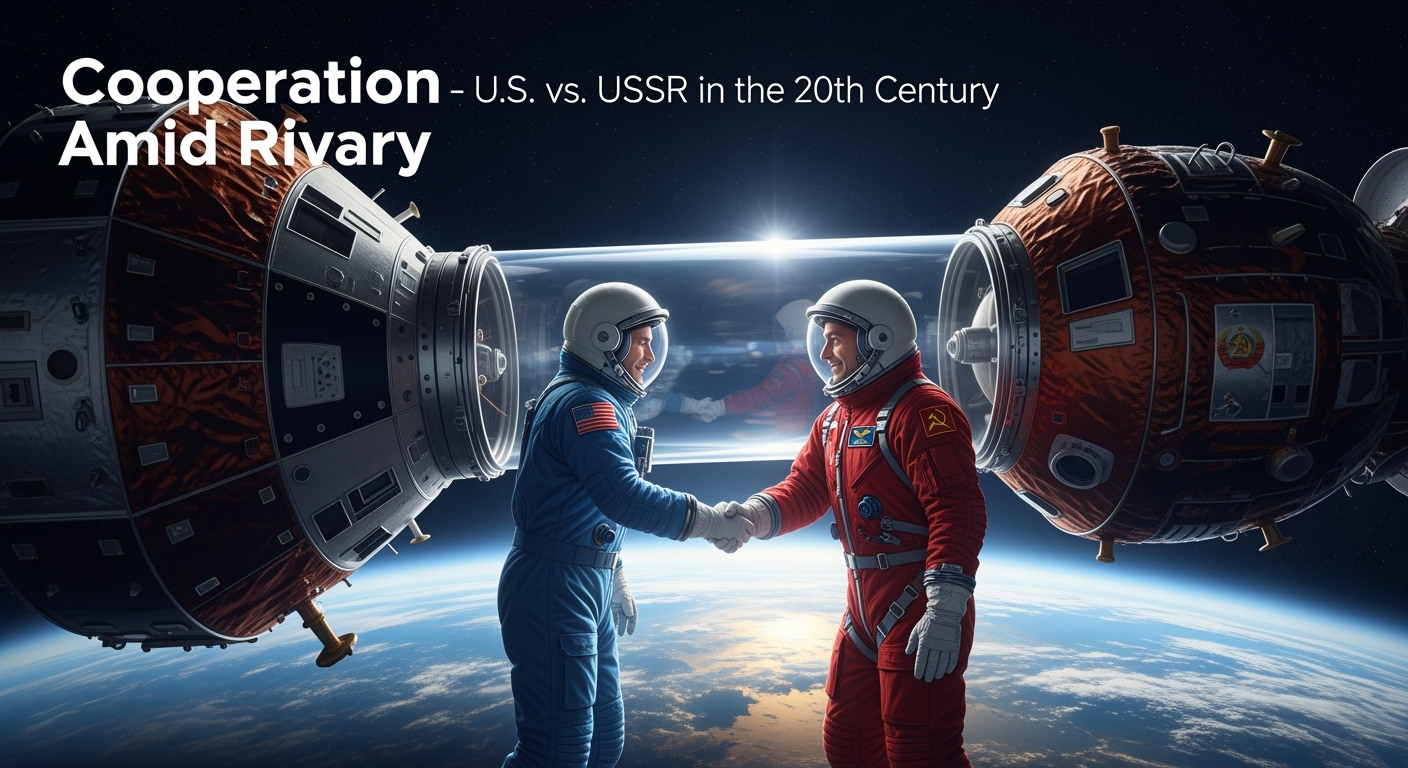
The Legacy of the Space Race
The Space Race left a profound legacy. It advanced technology at a breathtaking pace, leading to innovations in computing, materials, and communications that transformed everyday life. It demonstrated the power of national commitment, as massive resources were mobilized to achieve goals that once seemed impossible.
It also showed the dual nature of exploration. Spaceflight was driven by political rivalry, yet it inspired people worldwide with a sense of unity and wonder. The image of Earth seen from space, a fragile blue planet floating in darkness, reshaped how humanity saw itself.
Today, new players such as China, private companies like SpaceX, and international coalitions are carrying exploration forward. Yet the story of the Space Race remains a reminder of what can be accomplished when ambition, competition, and imagination converge.
The Space Race between the United States and the Soviet Union was one of the defining dramas of the 20th century. It was born of Cold War rivalry but grew into something greater, a global saga of human ingenuity and determination. From the beeping signal of Sputnik to the footsteps on the moon, it charted a course from fear and competition to discovery and inspiration.
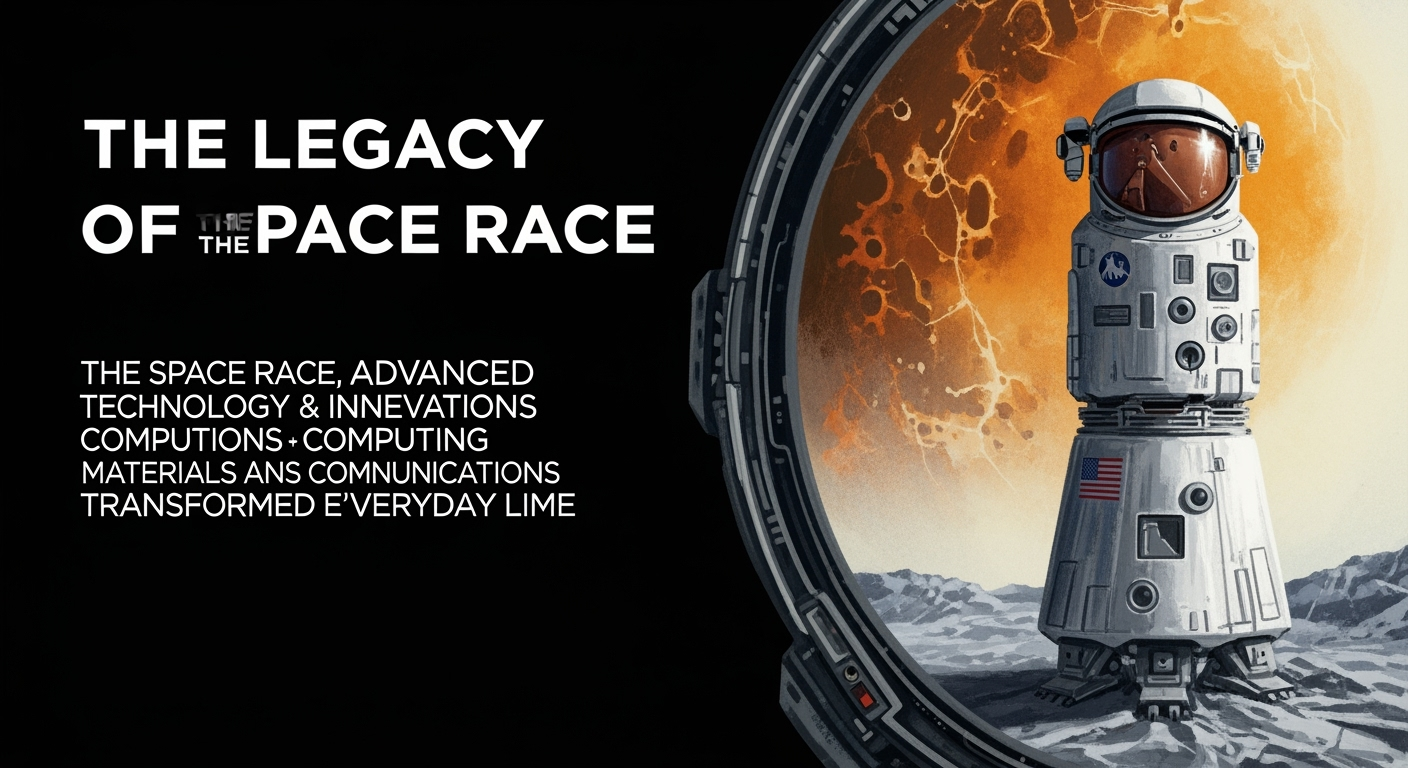
Disclaimer
This article is for educational and informational purposes only. While HistoryReveal.com strives for accuracy, historical interpretation may vary, and readers are encouraged to consult additional sources for deeper study.